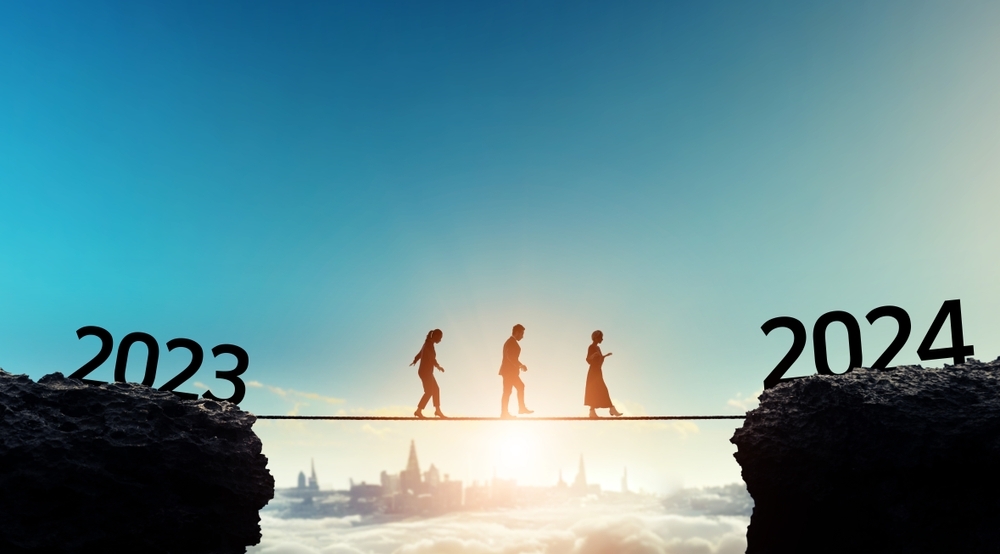Risk
Top Emerging Trends in Physical Security for 2024

The past couple of years have been unprecedented for everyone, including workers in the security industry. So what’s next for physical security? We’ve put together a list of things of security trends you can expect to see in 2024.
Need help assessing your site’s security? Contact us now for a demo.
10 emerging trends in security in 2024
1. The C-suite will realize that cybersecurity is security. For years, cybersecurity and physical security have been siloed from each other, and at many companies, each has had its own seat in the c-suite: the Chief Security Officer (CSO) and Chief Information Security Officer (CISO). But that’s changing — the past few years has shown us how closely information security and physical security are linked. There may be changes in the next few years that may force them together, either from insurance concerns or the increase in ransomware threats. This may not necessarily mean that both positions will be consolidated into the Chief Security Officer’s role. Rather, we’ll see an adaptation; the Chief Security Risk Officer.
2. Risk, not security, will be a major focus. Security, in all its forms, is about managing and mitigating risk. As organizations realize the importance of risk, physical security, information risk, and human resources – another department that manages risk – is going to be the new emphasis. Security, IT Risk and HR will fall under security risk. This means risk analysts will become an increasingly important part of every security team. Companies will start looking more closely at data, and how it can help them predict threats and the likelihood of risks.
3. Insider threats will be a bigger concern. Insider threats have always been a problem, but as businesses try to edge into the market first and capture market share, we can expect to see more insiders being used to undercut competitors. The security industry is likely to spend more time trying to find and dissuade malicious insiders who might be acting on behalf of business rivals.
4. The rise of the VSOC. Global Security Operations Centers (GSOCs) have been around a long time; they’re a place where security staff can monitor camera feeds, officer schedules and other day-to-day security issues. However, as data becomes more important, the GSOC is undergoing a change. We are seeing more and more virtual GSOCs (VSOCs.) VSOCs allow remote staff to monitor everything from camera feeds, technology on the site being monitored, analytics, and integrated, monitoring data such as social media mentions, employee travel and other potential risks. VSOCs gives your team a longer reach and makes the GSOC an option for organizations of all sizes
5. Autonomous security technology will continue to grow. While security officers are an essential piece of your physical security strategy, the manguarding problems that have plagued the security industry have still not been solved. Quality issues, unfilled posts, and labor shortages are still a problem. In the coming year, we expect to see more manguarding companies using technology, like autonomous robots and drones, to fill the gap. This is unlikely to eliminate guards completely — it will just take care of the grunt work and leave the problem-solving and decision making to one or two officers. There are distinct advantages to robotics over personnel other than the obvious cost savings and these will be increasingly realized. A hybrid approach to security using both personnel and personnel will be necessary for the newly emerging threats and hazards. The security companies that don’t embrace innovation and adopt technology are likely to fall behind.
6. Access control is evolving. Access control has been changing a lot over the last decade and next year is likely to continue the trend. Rather than using a badge to grant access, some companies are already using employees’ keychains, wallets, smartphones and other devices. Some businesses may even go as far as using microchips in their workers’ arms, although there is legislation in some states that prohibits companies from requiring workers to get chipped.
7. Adoption of automated vehicles will increase… and need to be secured. As more organizations start incorporating self-driving vehicles into their supply chain, security experts will need to weigh the risks of such vehicles being hacked, rerouted, or suffering other such attacks. Increasing the effectiveness of the supply chain for companies is critical, however with progress can also have risks. Protecting the vital cargo will be a challenge with the new advancements in this space.
8. Organizations will consolidate the security technology stack. Many organizations are looking to narrow down the number of security tools they’re using. They’re looking at integrations and finding technology that can take on a range of functions. If they can find one tool that does many things, they are willing to eliminate single-function tech tools, even if they’ve been using those tools for a long time.
9. School security is in the spotlight. With ASIS about to launch its school safety standard in 2024, there is a growing emphasis on school security and safety, and we expect to see much more discussion about securing schools in the next year.
10. The supply chain will remain a weak spot. In the past three years, the supply chain has been under attack. We’ve seen porch pirates, goods being stolen off trains, and organized gangs stealing from delivery trucks. This is unlikely to slow down in 2024, and businesses are going to have to figure out how to secure their shipments while they are en route to consumers.
What challenges will your business face in 2024? Contact us now about assessing your security, and make a plan for the next year.





